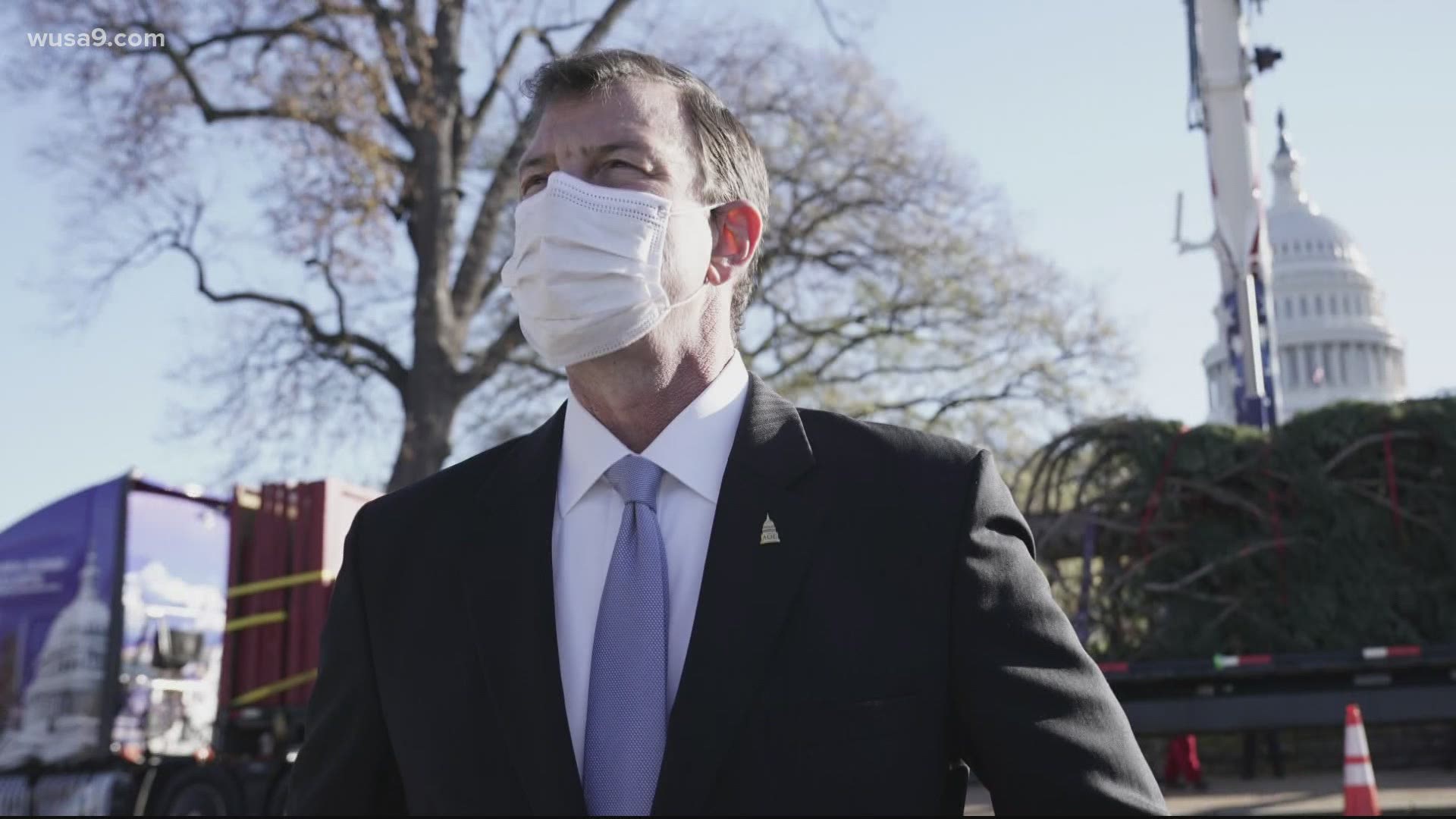WASHINGTON — In prepared testimony reviewed by WUSA9, Architect of the U.S. Capitol J. Brett Blanton said he was never contacted about deploying the National Guard to secure Congress, a request made by the Capitol Police chief before the Jan. 6 insurrection.
Blanton is a member of the U.S. Capitol Police Board, the oversight body with ultimate say over whether the National Guard can patrol Capitol grounds. The three-member Board includes Blanton, and both sergeants-at-arms of the U.S. House and Senate.
Former U.S. Capitol Police Chief Steven A. Sund testified previously that the Board denied his request for troop reinforcements, a rejection made two days before the attack.
RELATED: Could the National Guard have been called to the Capitol earlier? Witnesses differ over key hour
Yet Blanton’s new statements add a layer of intrigue to well-documented communication breakdowns at the Capitol. Blanton, an official who could have been part of a National Guard discussion, is set to tell House members Wednesday that he was not included in those security talks.
“Then-chief Sund did not reach out to the Architect of the Capitol with a request for an emergency declaration or interest seeking National Guard support in advance of the breach,” Blanton wrote in prepared remarks for upcoming House testimony. “[Sund] engaged in conversations with other members of the Board–House and Senate Sergeants at Arms–but no such conversation occurred with me or any AOC employee involved in Board matters.”
Blanton is set to address the House Appropriations Committee at 10 a.m. Wednesday. His role in security decisions was not addressed during Senate testimony Tuesday, when Sund and the now-resigned sergeants-at-arms faced nearly four hours of questioning.
According to his prepared remarks, Blanton will describe attending an inauguration preparation meeting with Sund, “but there were no actionable intelligence or credible threats shared at that meeting.”
The Architect of the Capitol is the federal agency responsible for the operation and preservation of the Capitol complex, employing about 2,300 people.
As the insurrection unfolded and emboldened rioters deployed noxious chemicals against law enforcement, Blanton is also prepared to describe how unsung heroes raced to the roof to reverse the airflow of the Capitol corridors.
“Members of our team raced to the roof to reverse the airflows within the building to help clear the air of chemical irritants, like bear repellents and pepper spray,” Blanton wrote. “While more team members rushed bottles of water and eyewash stations to Capitol Police officers in need of assistance.”
In his remarks, Blanton described how pepper spray accretions and residue from chemical irritants could cause lasting damage to the nation’s treasures. He said Capitol statues, murals, and paintings “will require expert cleaning and conservation."

